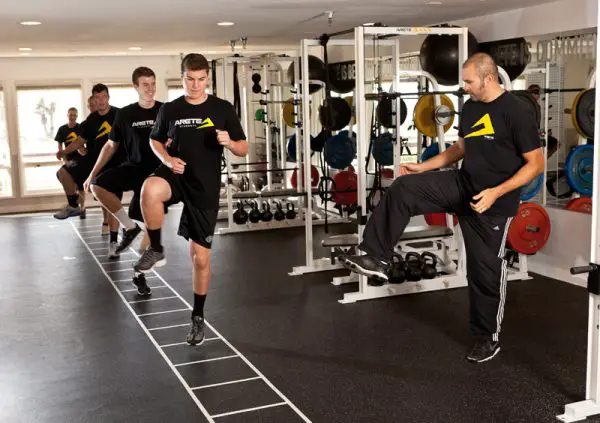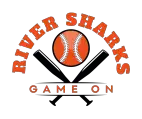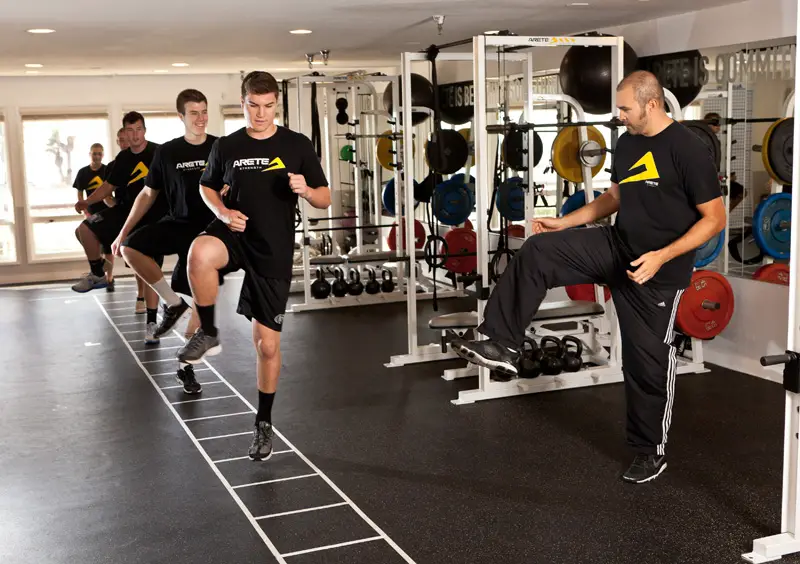The agility of the infielders and outfielders defines the defence of any team. The fielders will have to be agile enough so that they can react quickly to a ground or a fly ball, in case it goes off in an unpredictable trajectory. Needless to say, they also need the necessary footwork to get the job done. Batters need agility as well to run speedily.
Agility drill not only enhances running speed but also improves endurance, reflex, and reaction time. If you want to boost your performance in the field, as a batter, fielder, or even pitcher, practising some agility drills will get you going.

Practising other types of drills, like catching pop-ups and throwing grounders are essential too. But you cannot go about it until your fitness and agility are up to the mark. Agility drills improve four basics needed for a better fielding or batting. They are — quickness, agility, footwork, and speed.
You can practice these agility drills along with your team members on the ground while you are practising. But you should practice these by yourself as well because perfection requires hard work.
1. Bunny Hops
To do bunny hops, you will need five traffic cones. This particular agility drill requires you to employ leg power more than it requires you to have to run up to and around the field. Players need to practice this drill about 30 minutes or more to harness agility and speed in them.
First, the coach gets three traffic cones and lays them along a straight path. There has to be a gap of four to five feet between each cone. Now, get all the players in a line. They must be in a standing position. Players will have to join their feet and prepare themselves to hop over the traffic cone line.
On the count of three, the player first in line jumps above the first cone and heads towards the second cone to jump over it. The second player promptly joins in, followed by the other players in the line. As there is already a distance of 4 or 5 feet in between the cones, the players should have no problem.
As the players end jumping over the first three cones, the coach adds another one in line to increase the level of intensity. The players must repeat the process again—this time, with four cones. This way, work your way up to five cones. It is a gradual process that will surely help players’ agility a lot.
2. Side Hops
To do side hops, you will need those five traffic cones again. However, unlike the bunny hop, this drill will require you to do the hopping in quick succession. Also, in this exercise, your feet won't be joined.
Lay all the cones in a line, and then the players turn to their side and jump over all the cones in rapid succession. As you jump over the cones side wise, you should pump your arms. This will help you to keep up the momentum.
Once you are done jumping over all the cones along the line, turn to the other side, and then hop your way back to the starting point.
This drill strengthens the players and boosts their lateral quickness. This will particularly help the infielders to loosen up and retrieve grounders that are shot to the right or left.
3. Agility Ladder Feet Shuffle Drill
Baseball players have to be agile. The quicker their reflexes function, the better. And of course, they must work on the four key components— speed, quickness, footwork, and agility.
As days are going by, the popularity of the agility ladder is increasing. It is because these ladders can be a good prop for doing some intense foot exercises. If you are in the search for good agility ladders, you can look up Amazon. They have some really fine and sturdy ones in stock. These don't cost much and benefit players in more ways than one.
These ladders look similar to regular ladders. However, the constituent materials are plastic and nylon. They also have adjustable rungs. A good-quality agility ladder of fifteen feet in height should suffice for this drill.
If you are a beginner or training players who are beginners, leave the rungs at their regular places. However, for a more intense agility drill, you can opt for adjusting the rungs wider.
As agility ladders can easily be laid straight on the field, practising step drills should not be a problem at all. In fact, these ladders work better than cones for this particular exercise.
To do this baseball agility drill, first, keep your agility ladder flat. Now, follow the below mentioned simple steps:
- Stand on one side of this ladder
- Step inside a square, using the right foot first, followed by the left
- You are now standing in between two rungs
- Step out of the square with the right foot
- The left foot heads towards the square that is right above
- Get the right foot inside
- Step out with the left foot
- Bring in your right foot
- The footwork continues until you have worked your way up to the end on the ladder
The main idea behind this drill is for the players to stream through the ladder in a hopping manner. As the feet of players go in and about several sets of rungs, the knees bend slightly.
This drill is especially great for fielders who require similar footwork while throwing the grounder during game plays. If this is you, then you should check out our 15 best ground ball drills.
4. Running and Switching Drill
In a baseball field, both the infielders and outfielders have to run backward in case the ball flies past them. This drill teaches the fielders how to run backward and sideways. This exercise comes handy when they are trying to run along the path of the ball's flight.
For this agility drill, the team coach and a player have to stand at a distance of 8 feet. They should face each other. On saying ''go,” the player takes creep steps towards the coach, beginning with the left foot and then following it with the right one.
After the player takes two creep steps, he runs briskly towards the left. When the Coach instructs to 'switch,' he promptly switches his direction and runs towards the right, while taking backward steps and extending the glove. This is when the coach rolls a fly ball. The fielder follows the trajectory for catching the ball.
Keep practicing this drill to become more agile and field better. About 10 to 15 repetitions should be good for each session. The player should always focus on the trajectory of the ball and run with light feet. The key purpose of this drill is to improve your sight, concentration, agility, and speed. Once you can catch the ball by maintaining eye contact and running at the same time, you have attained the purpose of this agility drill.
5. Backpedal Ball Drop Drill
You should do this drill after you are through with the team warm up. This drill puts a tad pressure on the players' hamstrings, and you need a good deal of coordination and agility to get this drill done. Hence, the players should do their initial workout and be ready.
You need to make several teams. Each team should have two players. Make the players form a line that begins at the first base and ends at the third. In this drill, the first player holds and drops the baseball while the other player is in charge of retrieving it.
The second player backpedals through the foul-line and moves away from the first player, who has the baseball.
The first player who is standing with the baseball holds it at arm's length before dropping it. On seeing the ball drop, the player who was backpedalling runs forward in order to retrieve it.
After retrieval, the player gives the ball back to the one who drops it and goes backpedalling again. To make the most out of this agility drill, repeat it 10 times. After that, the players switch roles and do it again.
6. Quadrant Drill
Acing the footwork is one of the key components of effective fielding. Infielders and outfielders need to have good footwork skills and be able to run front, back, right, and left easily for quicker retrieval.
For quadrant drill, you need tape and a marker. Now cut two pieces of 5 feet long tapes. Lay one in a straight line and the other horizontally. The second piece of tape should cross the first one right from the middle. It should form a ''+'' sign. This creates four zones. Now using markers, mark the zones numerically.
Players must stand in an attention position with their feet joined. On the instruction of the coach, the players jump from one quadrant to another. Here are some recommendations for how the jumping sequence can proceed.
- 1-2
- 1-4
- 2-4
- 1-3
- 3-4
Players must jump from one quadrant to the other and back again. Repeat this exercise 10 times. Once the players become better at this, you can increase the intensity by instructing them to jump through 3 quadrants and eventually, all four of them.
- 1-2-3
- 4-3-2
- 2-1-4
- 2-3-1-4
- 1-2-3-4
When you are convinced of their agility, you can further toughen things by asking the players to jump with a single foot. The posture has to be right. The back should be straight, chest up, and face forward. While doing this drill, they will have to be pretty quick throughout.
7. Box Jumps
In recent days, people are going gaga over plyometric boxes. Well, we don't deny its utility, but for box jumps, a simple wooden box should do just as well. To do this drill, you need a wood box that measures 24x28x20 inches. As the player's stamina and agility increases, the coach can heighten the intensity by increasing the box’s height by four inches. Apart from increasing agility, box jumps also improve players' lateral movement.
The players should not be wearing any padding while doing this drill. Also, this drill is best done barefooted. So, players must take their shoes off, especially the ones with cleats. Now, put the wooden box in an area with a clearance of four feet in each direction. Get the players to line up.
- Each player gets in a squatting position, keeping a gap of 8 inches from the wooden box
- On saying 'Go' by the coach, the player jumps on the box by landing on both their feet
- The player jumps off of the wooden box to the point where he started
- One set consists of doing this drill ten times.
You can create several variations of this drill. Instead of having the players jump back, you can make them jump in front or the left or right direction. Also, after they are well-conditioned, you can have them do this drill sideways.
8. 5 Cone Ball Running Drill
Fielders will especially benefit from this particular drill as it enhances their ability to pick up grounders. To do this, the fielders must lose their glove. They scoop up a grounder with bare hand and promptly throw it to the other fielder so that the runner is out.
Modern baseball requires players to have top-notch fitness and agility. They must be able to run in all directions without any lag. Once players can run quickly with great footwork, their overall performance as a fielder, runner, pitcher, and even as a batter gets better. They can do precise movements with light feet.
To do this drill, take five cones and put them in the pattern of a semicircle (crescent moon). First, the coach sits in a kneeling position, right outside the semicircle. A player stands on one end of it.
The coach tosses a ball to the first cone, i.e., the one that is closest to the player. The fielder sprints and scoops the ball and makes an underhand toss to the coach.
Now, the coach soft tosses that ball to the second cone. The players repeat the same pattern— sprint, retrieve, and toss. This way, the coach makes five tosses, one at each of the five cones, before the set is complete.
This drill augments precision. The player has to halt the back leg to stop at the exact spot. If they stop the front leg before the back leg, they might tumble over or keep moving.
9. Delayed Steal Agility Drill
It improves a player's shuffling motion when they are posted as fielders on the base while taking secondary leads. This drill requires players to run between bases.
To do this drill, a player has to stand at a base and then shuffle towards the secondary base. This should take two shuffles, in left-right-left-right order. For this drill, the coach will be standing at the home plate and has a baseball and a bat.
The coach will hit the ball towards the shortstop. He would go-ahead to field the ball and throw it to the second base so that the runner heading towards the second base is out. The runner should place his weight on the right foot when the coach hits the baseball to the shortstop. The moment the coach hits, the runner runs and tries beating the throw towards the second base by getting the bag covered.
A hit ball is not always necessary for this drill. You have to place runners on each end for it. At the moment the coach instructs, the runners have to take shuffle steps away from the bag. They stand pressing on the right foot. When the coach utters 'Go,' the players promptly run towards the next bag.
You can turn it into fun by doing this as a race. Place the bags 90 feet apart. When the coach says 'Go,' the players run towards the next bag. The one to reach first is declared to be quickest among the participating players.
10. Figure 8 Drill
It is a simple drill that improves the strength of knees and ankles. To do this agility drill, you will have to run around traffic cones following a path that resembles '8.' When players steer their legs by the cones, it improves the strength of the knees and ankles.
To do this drill, you require about 5 short traffic cones. You will have to arrange these cones in an 8 pattern. Place two cones side by side by maintaining a distance of five feet. Now take two more cones and place those parallel to the ones you have placed before at a distance of 10 feet. Take the remaining cone and put it right in the middle.
- The players stand straight on one end of the 8 pattern they have laid. They stand on the cone's left.
- A Player runs diagonally and passes the middle cone on their right side.
- He continues to run around the cones following the pattern of an 8. This time, he passes the center cone on his left side.
- The player again goes around running by the outer cone, moves this way along the inside, and crosses the center cone on his right side this time.
The coach should put a time limit on this drill. Each of the players must complete one complete pattern within a time frame of two minutes before turning and doing it again.
11. Push Up and Sprint Drill
It is a much more intense drill that works on all the muscle groups of a player's body. It takes just some seconds to get it done. However, players will have to gain a certain degree of fitness before they can include this drill into their regime. You can get this drill incorporated with the previous cone drill.
Players should choose a soft and flat surface to do it. A field with grass makes for an ideal choice. If you are doing it inside a gym, make sure to lay down a mat before you begin. Also, while doing it, the players must be wearing sneakers.
A player has to lay down on his belly. The hands pressed on the grass or mat. His hands should be apart, and so should his legs be.
When the coach instructs, a player pushes his body up and gets in a running position at the quickest. Then the player sprints for a distance of 30 feet.
You can make this drill a part of the exercise regime of all the players if they are fit enough. Even better, make them do this drill one by one. It will keep up the momentum. Once a player gets this drill done, he runs back to the queue's end so that he can repeat again when his turn comes.
12. Running for a Double
If you want your players to run faster while staying light on the feet, then this is a good drill you can introduce them to. This agility drill will also help players to go for a double instead of the single.
For this drill, the coach gets the players in a line in front of the home plate. You can include a baseball to do it, or just engage in a mock practice. However, the inclusion of an actual baseball would be better as it would give you an essence of real game play. Hit the baseball using a fungo bat and get your player running to beat the ball to second.
A player holds the bat when the coach instructs, the player lets the ball drop, after which he runs to the first base. The runner must pump their knees high up and run with a light foot from the home to the second.
You can give this drill the shape of a competition by keeping track of the time each player takes for completing it.
Looking for more?
If you would like to read more, then we have hand picked some of our most popular pieces.
Drills:
15 Best Ground Ball Drills For Your Next Practice
8 Incredible Baseball Drills for 10 year olds
9 Baseball Tee Drills to Take Your Hitting to the Next Level
Equipment & Apparel:
Easton MAKO Youth Baseball Bat Review
Rawlings Prodigy BBCOR review
Best Baseball Glove for 10 Year Old Boy




